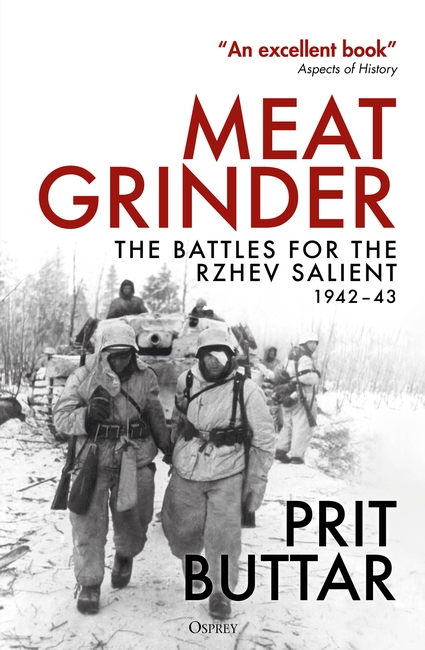
Battles that drag on for long periods have a tendency to evolve far beyond their origins, in terms of scale and the objectives of the two sides. The Rzhev sector came under German control in the last thrusts towards Moscow, at a time when the Soviet capital seemed to be tantalisingly close; the subsequent Soviet counteroffensive tore huge holes in the German line, and when the front stabilised, the two exhausted armies warily faced each other on a front line that bent back on itself, creating a great salient that projected towards the north, just 70 miles (120km) to the west of Moscow. At first, the Red Army believed that the front line would quickly collapse and the momentum of the winter counteroffensive could be renewed, resulting in a rapid reconquest of the region; both sides were aware that the salient might serve as a springboard for a new German assault towards Moscow, and the elimination of the salient became a high priority for the Red Army, just as its retention became a similar priority for the Wehrmacht. As the fighting dragged on, the salient came to take on new meaning. The huge sacrifice of lives and materiel by the Red Army necessitated further attacks – the salient had to be destroyed to make any sense of the losses that had been suffered, and eliminating the salient became an obsession for senior Soviet commanders who saw its continued existence as a reminder of their earlier failures. For the Germans, retention of this bulwark to prevent rapid Soviet thrusts towards the west soon replaced any notions of a renewed offensive to capture Moscow. And ultimately, when enough blood had been spilled and the outcome of the war was decided in other sectors, the Germans quietly abandoned the territory that they had held for so long.
The legacy of the fighting around the salient is complex. Throughout the war, the Red Army continued to analyse its successes and failures and attempted to improve its performance. The bitter fighting around the salient undoubtedly contributed to the manner in which Soviet commanders planned Bagration, their massive summer offensive of 1944 that destroyed the German Army Group Centre, but although analysis of the repeated failures to overrun the salient was broadly correct, applying the lessons learned in a meaningful way often didn’t follow that initial analysis. The determined German defence of the salient raised the profile of Walter Model, with Hitler demanding that other commanders show the same determination in defensive fighting. But when the history of the war on the Eastern Front was written, the battles for the salient were almost forgotten. The great sweeping advances and counterthrusts across Ukraine to the south, before and after Stalingrad, and the bitter struggle by the Red Army to break through to lift the siege of Leningrad far to the north, seemed to eclipse the long battles around Rzhev that resulted in few significant advances by either side. Soviet historiography struggled to deal with the terrible casualties suffered by the Red Army for so little gain around the salient, and it was safer just to downplay the entire sector. What mention was made of the battles was misleading: they were portrayed as a necessary adjunct to operations elsewhere, serving either to exhaust the Wehrmacht or to tie down its forces so that they couldn’t be deployed in more important sectors. It wasn’t until after the end of the Soviet era that the history of the Rzhev Salient was re-evaluated and the scale of the fighting became clear.
Battles are remembered for many reasons. Sometimes, they represent great turning points in history, or significant defeats or victories. In the west, we have become accustomed to remembering some battles, such as those of the First World War, purely to honour the memories of those who gave their lives. Even now, the memories of the battles around Rzhev are scarred by the need to justify the numbers who died, and are coloured by the historical legacy of commanders whose reputations were so great in the years that followed the war that questioning the conduct – or even the necessity – of the slaughter to the west of Moscow was unthinkable.
This is the complete story of the bloody history of the Rzhev Salient, from its formation to its final evacuation. It is also a testament to the terrible suffering of the soldiers of both sides, and the local civilians, who endured one of the most brutal and prolonged phases of the Second World War.
You can continue reading in Meat Grinder: The Battles for the Rzhev Salient, 1942–43


Comments
You must be logged in to comment on this post. Click here to log in.
Submit your comment